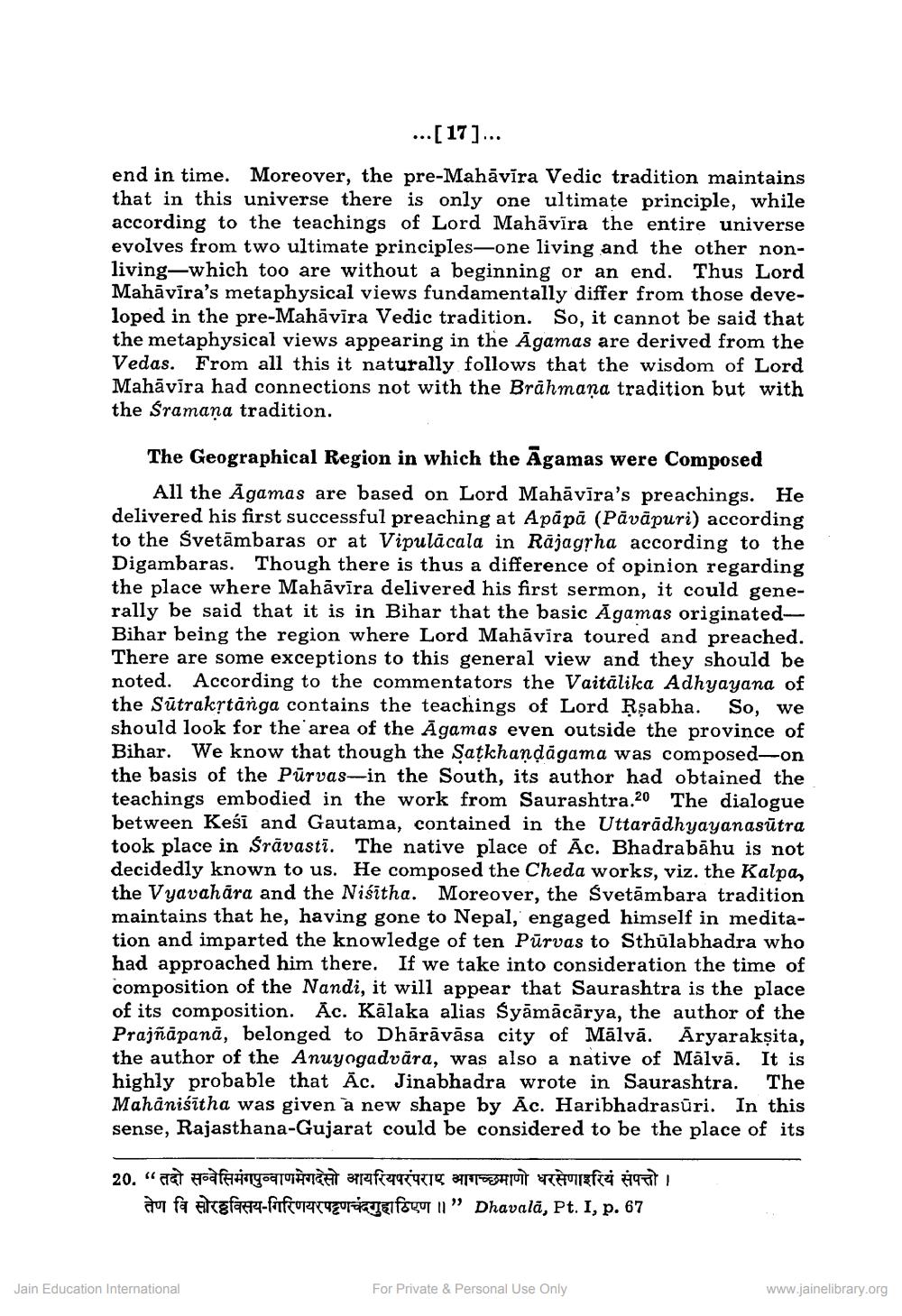________________
... [17]...
end in time. Moreover, the pre-Mahāvīra Vedic tradition maintains that in this universe there is only one ultimate principle, while according to the teachings of Lord Mahavira the entire universe evolves from two ultimate principles-one living and the other nonliving-which too are without a beginning or an end. Thus Lord Mahāvīra's metaphysical views fundamentally differ from those developed in the pre-Mahāvīra Vedic tradition. So, it cannot be said that the metaphysical views appearing in the Agamas are derived from the Vedas. From all this it naturally follows that the wisdom of Lord Mahavira had connections not with the Brahmana tradition but with the Sramana tradition.
The Geographical Region in which the Agamas were Composed
All the Agamas are based on Lord Mahāvīra's preachings. He delivered his first successful preaching at Apāpā (Pāvāpuri) according to the Svetambaras or at Vipulacala in Rajagṛha according to the Digambaras. Though there is thus a difference of opinion regarding the place where Mahāvīra delivered his first sermon, it could generally be said that it is in Bihar that the basic Agamas originatedBihar being the region where Lord Mahavira toured and preached. There are some exceptions to this general view and they should be noted. According to the commentators the Vaitalika Adhyayana of the Sutrakṛtānga contains the teachings of Lord Rṣabha. So, we should look for the area of the Agamas even outside the province of Bihar. We know that though the Satkhanḍagama was composed-on the basis of the Purvas-in the South, its author had obtained the teachings embodied in the work from Saurashtra.20 The dialogue between Keśi and Gautama, contained in the Uttaradhyayanasūtra took place in Śrävasti. The native place of Ac. Bhadrabahu is not decidedly known to us. He composed the Cheda works, viz. the Kalpa, the Vyavahāra and the Nisitha. Moreover, the Svetāmbara tradition maintains that he, having gone to Nepal, engaged himself in meditation and imparted the knowledge of ten Purvas to Sthulabhadra who had approached him there. If we take into consideration the time of composition of the Nandi, it will appear that Saurashtra is the place of its composition. Ac. Kalaka alias Syāmācārya, the author of the Prajñāpanā, belonged to Dhārāvāsa city of Malvā. Aryarakṣita, the author of the Anuyogadvāra, was also a native of Malvā. It is highly probable that Ac. Jinabhadra wrote in Saurashtra. The Mahaniśitha was given a new shape by Ac. Haribhadrasūri. In this sense, Rajasthana-Gujarat could be considered to be the place of its
20. “ तदो सव्वेमिंगपुव्वाण मेगदेसो आयरियपरंपराएं आगच्छमाणो घरसेणाइरियं संपत्तो ।
ते विसोरविसय- गिरिणयरपट्टणचंद्रगुहा ठिएण ॥ " Dhavalā, Pt. I, p. 67
Jain Education International
For Private & Personal Use Only
www.jainelibrary.org




